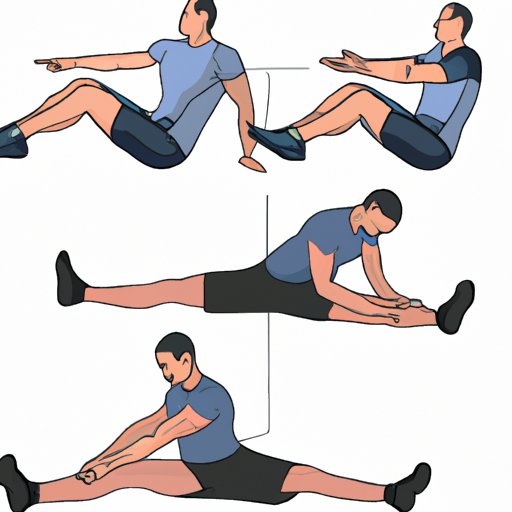Introduction
Stretching exercises have long been an integral part of physical fitness. From yoga poses to dynamic warm-ups, stretching is one of the most popular forms of exercise. But what exactly is stretching, and why should we include it in our regular exercise routines? In this article, we’ll explore the various benefits of stretching, and look at how it can help with injury prevention and post-exercise recovery.
What is Stretching Exercise?
Stretching exercises are any type of movement that lengthens and stretches the muscles and connective tissues of the body. This can include anything from basic stretching poses like toe touches and cobras to more dynamic movements such as jumping jacks and lunges. Stretching exercises can be done before or after a workout, or even on their own as a form of recovery and relaxation.
Benefits of Stretching Exercises
Stretching has a number of benefits, both physically and mentally. Physically, stretching improves flexibility and range of motion, which can help reduce the risk of injury and improve performance during physical activities. It also helps to relieve tension and tightness in the muscles, improving circulation and aiding in post-exercise recovery. Mentally, stretching can help to reduce stress and anxiety, and can even improve mood.
Stretching Exercise Routines for Different Levels of Fitness
Stretching exercises can be tailored to suit any level of fitness. For beginners, simple stretching poses such as toe touches, arm circles, and side bends are a good place to start. Intermediate exercisers can try more challenging stretches such as standing forward folds, downward dogs, and side splits. Advanced exercisers may want to incorporate dynamic stretching into their routine, such as leg swings, high knees, and lateral shuffles.

The Impact of Stretching on Injury Prevention
Stretching can play an important role in injury prevention. By increasing flexibility, stretching can help reduce the risk of muscle strains and tears. It can also help to improve balance and coordination, which can help reduce the risk of falls and other accidents. Additionally, stretching can help to reduce the risk of overuse injuries by helping to maintain proper posture and alignment.

A Guide to the Different Types of Stretching Exercises
There are several different types of stretching exercises, each with its own unique benefits. Static stretching involves holding a position for a period of time, usually around 30 seconds. Dynamic stretching involves moving through a range of motion and gradually increasing the stretch. Ballistic stretching involves bouncing in and out of a stretched position. PNF (Proprioceptive Neuromuscular Facilitation) stretching involves contracting and relaxing the muscles to increase flexibility. Finally, Active Isolated Stretching involves stretching each muscle group for a brief period of time.
Understanding the Role of Stretching in Post-Exercise Recovery
Stretching can also help with post-exercise recovery. Regular stretching can help to break down lactic acid buildup, reducing soreness and fatigue. It can also help to reduce inflammation and promote circulation, which can speed up recovery time. The best practice for post-exercise stretching is to focus on the muscles used during the activity, and to hold each stretch for 20-30 seconds.

How to Incorporate Stretching Into Your Workout Routine
In order to get the most out of stretching, it’s important to make it a regular part of your workout routine. Start by scheduling regular stretching sessions, either before or after a workout. Next, create a customized stretching routine that targets the specific muscles you use most during your workouts. Finally, integrate stretching into other workouts, such as running or weightlifting, to ensure that all muscle groups are getting the attention they need.
Conclusion
Stretching exercises offer a wide range of benefits for people of all levels of fitness. From improved flexibility and posture to reduced risk of injury, stretching can help keep you healthy and active. Whether you’re a beginner or an advanced exerciser, incorporating stretching into your regular workout routine can help you maximize your performance and minimize the risk of injury.


